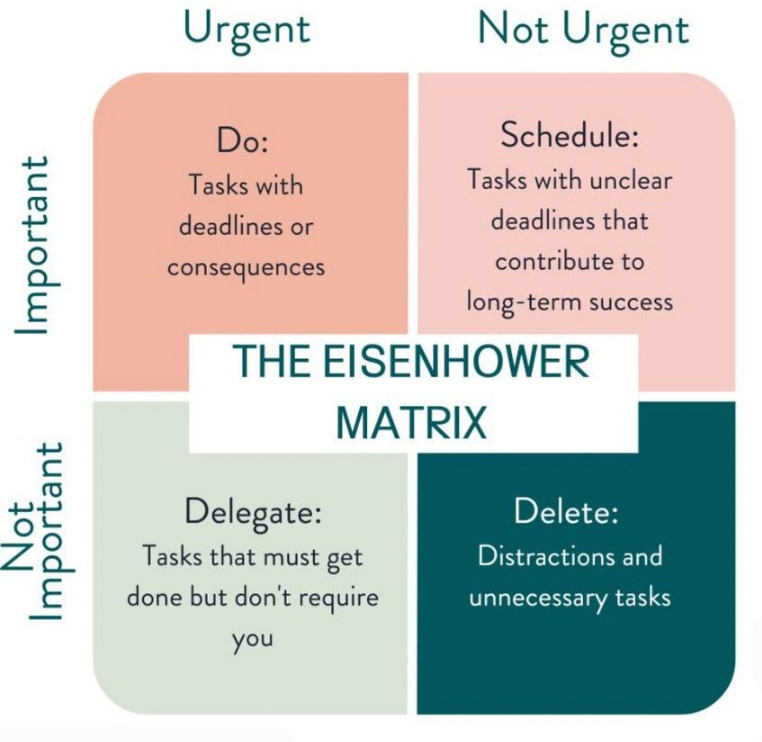What to Do Before Leaving for a Winter Vacation: A Step-by-Step Guide
Proper preparation before the holidays helps you avoid work interruptions during your break. To enjoy the festive season without distractions, it’s essential to finish ongoing tasks, share key information with colleagues, and notify everyone about your vacation dates in advance.

This article offers a detailed, step-by-step plan to leave for your winter vacation with no unfinished projects, unanswered emails, or urgent calls from work.
Planning: From Chaos to Structure
A truly relaxing vacation is possible only when you’re confident that everything at work is under control. The first step to achieving that peace of mind is organizing all current tasks and projects. A structured approach at this stage prevents confusion and ensures that no important details slip through the cracks.
Creating a Task List
Start by unloading everything from your head — every task that requires attention. Write down not only big projects but also small, secondary to-dos. This brain dump frees up mental space and makes it easier to analyze your workload without fear of forgetting something important.
Prioritizing with the Eisenhower Matrix
Once your list is ready, it’s time to separate what’s urgent from what’s secondary. The Eisenhower Matrix is the perfect tool for this.
Divide all tasks into four categories:
- Urgent and Important: Must be completed before your vacation. Focus your main effort here.
- Important but Not Urgent: Can be planned for January or delegated to someone else.
- Urgent but Not Important: Tasks that eat up time but don’t affect results. Delegate when possible.
- Not Urgent and Not Important: These can be dropped without harm — at least for now.

Use digital tools so your list is accessible anywhere and easy to update. Popular options like Notion, Todoist, TickTick, or Any.do help you sort tasks by importance, set deadlines, and sync everything with your calendar.
Once you’ve categorized everything, you’ll have a clear, visual plan for the days leading up to your vacation.
Communication and Delegation: Inform, Don’t Apologize
Even the best-crafted plan is useless if no one knows about it. This stage is about communication — informing colleagues, partners, and clients of your upcoming absence and ensuring they have all the information they need. It’s both a sign of respect and a way to protect your peace during the holidays.
Notifying Key Contacts
The goal is to make sure everyone knows who to reach while you’re away — preventing confusion or last-minute calls.
Step-by-Step Plan:
1. Make a contact list of people who might need you:
- Internal stakeholders (managers, team leads from other departments).
- Key external partners (clients, vendors, contractors).
- Members of your own team.
2. Prepare your message — include:
- Fact: Exact vacation dates.
- Solution: The name, position, and contact details of the colleague handling things in your absence.
- Guarantee: A confident statement that this person is fully briefed.
3. Send your notice one or two business days before your vacation — or earlier if needed. This gives time for clarifications. Example message:
Hi [Client Name],I’ll be on vacation from December 20 to January 5. During that time, [Colleague Name, Position] will handle all project matters. They’re fully briefed and ready to assist. You can reach them at [phone] or [email].
Handing Over Tasks
Hold a handover meeting — short but highly focused. This can be done in person or online, depending on your team’s format.
Suggested agenda for the meeting with your backup colleagues:
- Overview of ongoing tasks:Review your task list together, note statuses, next steps, and risks.
- Define responsibilities:“Maria, you’re handling all requests from Client A and reports for Project B. Ivan, you’ll coordinate with Contractor C.”
- Share file locations and access info:“The contract is in /Contracts/Client_X/, and the report’s current version is in Google Docs — link in Task #XX.”
- Discuss contingency plans:“If there’s a server issue, here’s tech support’s number and the admin login.”
- Set boundaries for contact:Agree on when they can reach you — only for emergencies that block operations.
Make your absence visible:
- Update your status in the corporate messenger: “On vacation until 10 Jan.”
- Add a note in your email signature: “Out of office 12/20 – 01/05. Urgent inquiries → [Colleague Name], [email].”
- Post an update in your team chat or project tracker with this info pinned.
By the end of this stage, everyone knows who’s in charge, your stand-ins feel confident, and your workflow runs smoothly — even without you.
Technical Preparation: Digital Order
Even the best communication plan won’t help if the right file or password can’t be found when needed. This step creates a stable digital foundation for your absence.
Tidying Up Your Digital Workspace
A messy desktop or inbox slows down colleagues who step in for you. The goal is to leave behind a clean, intuitive environment.
| Zone | What to Do | Result |
|---|---|---|
| Desktop | Clear out temporary files, screenshots, and outdated documents. Move important items into structured folders on your drive or cloud storage. Keep only shortcuts to key folders on your desktop. | A clean, organized workspace that makes returning to work smooth and fast. |
| Set up filters or rules to sort incoming messages while you’re away. Flag or move important threads to a separate folder so colleagues can find them easily. | Structured email flow — helps colleagues stay organized during your absence. | |
| Messengers | If permitted, mute work chats as your vacation nears. You can also set an avatar or status image showing your vacation dates. | Peaceful rest without constant reminders of unfinished work. |
Granting Access to Colleagues
The classic problem: “I can open this folder, but my colleague can’t.” Prevent it now.
Check permissions together with your substitutes for:
- Shared folders and drives.
- Cloud storage (Google Drive, Dropbox, etc.).
- Databases, billing systems, CRM tools.
- Project trackers (Trello, Jira, Asana).
Create an instruction file if any tools require special access steps — include login notes or short how-tos (respecting your company’s security policy).
Never send passwords in chats; instead, use encrypted notes or password managers with temporary sharing.
Backups
A backup is a reserve copy of your most critical work data — your safety net in case of technical failure or unexpected issues. While backups are worth doing regularly, they become especially important before you go on vacation.
What to back up:
- final versions of reports
- presentations
- financial documents
- source code, and other essential materials.
Where to store them:
- Cloud storage (Google Drive, Dropbox, or similar) — for quick, remote access.
- External hard drive or USB drive — as a local backup.
- Corporate server — if your company’s IT policy allows it.
Keep three copies of your data on two different types of media, with one copy stored in a different physical location (for example, at home or in the office).
This approach builds digital resilience into your workflow. Your colleagues will always have the files they need without chasing access rights, and you’ll rest easy knowing nothing important will be lost because of a glitch. This is the technical foundation of a worry-free vacation.
Wrapping Up with the Future in Mind
The final stage of preparation is the smooth transition from work mode to rest mode. The goal here is to complete what matters, create mental clarity, and set yourself up for an easy, confident return to work after the holidays.
Review Your Task List
Focus on the “urgent and important” items from your Eisenhower matrix. The idea isn’t to finish every project, but to reach clear stopping points that let others understand the current state of affairs.
Define what these stopping points look like for each task. For example:
- Instead of “finish the feature,” make it “commit the current code to the main branch with detailed comments.”
- Instead of “sign the contract,” make it “send the client the final version with a note that approval is expected after January 10.”
- Instead of “complete the report,” make it “fill in all December data and save it in the ‘In Progress’ folder with a clear filename.”
The goal isn’t the number of checkmarks but the clarity and safety of each pause. A teammate should be able to open any project and instantly see where you left off — without further explanations.
Make a Plan for the First Week Back
Returning from vacation can be stressful, but a realistic plan waiting for you on the first day can make it easier.
What to include:
- Incoming tasks: Reserve time in your calendar (for example, the first two hours of your first morning) to go through accumulated emails and messages.
- Priorities: List three to five key goals for the week based on importance rather than urgency. This helps you focus on what really matters instead of reacting to the noise.
- Meetings: Schedule short check-ins with key colleagues for the second or third day back — not the first — to catch up without being overwhelmed.
Where to keep it:
Save the plan as a document on your desktop or pin it in your task manager. Treat it as your anchor — something that will help you stay grounded and focused when you return to the office.
Psychological Ritual
This step marks the official transition from “I’m working” to “I’m resting.” It’s a symbolic action that signals to your brain that the work cycle is complete and the break has begun.
Examples of such rituals:
- Tidy your physical space. Leave your desk perfectly clean and organized.
- Digital closure. Close all browser tabs and work applications — don’t just put your computer to sleep, actually shut it down.
- Reflective action. Write down your top three achievements for the year or the day, and send a short thank-you message to your team.
- Context switch. Leave your workspace and do something that feels relaxing — go for a walk, watch a movie, or start a favorite hobby.
This isn’t just a break — it’s a mindful closure that helps you finish the year with a sense of completion and start your holidays refreshed and at peace.
Send Holiday Greetings to Colleagues
With all your work matters settled and handovers completed, it’s the perfect time for something enjoyable — spreading festive cheer at the office.
One of the most popular and easy ways to do this is through a Secret Santa exchange. It breaks the ice, lifts the mood, and helps everyone feel appreciated.
The easiest way to set it up is through the MySanta online platform:
- It lets participants chat anonymously with their gift recipients.
- Everyone can create wishlists, so it’s easier to find something thoughtful and on point.
- It supports any group size — from small teams to large companies.
- The draw is automatic — no one will accidentally be their own Santa.

Last Workday Checklist
Use this short checklist to make sure you haven’t overlooked anything. It takes no more than 30 minutes and ensures you’re fully ready to log off for the holidays.
Checklist Example:
- Check in with colleagues who’ll cover for you: “Do you have access to all files? Any questions left?”
- Review your inbox and messengers: reply to urgent messages and send quick reminders to partners about your absence.
- Save and close all work files and applications — don’t leave anything “in progress.”
- Back up all key documents to the cloud or an external drive.
- Tidy up your physical workspace: discard unnecessary papers, put things in drawers, and wipe down your desk.
- Shut down all equipment — monitor, computer, and peripherals — completely (don’t leave them in sleep mode).
- End the day with a small ritual: write down three achievements in your notebook, close it, and officially sign off.
Conclusion
Spending a few hours organizing your workload before vacation is an investment in the quality of your rest. In return, you get the peace of mind to enjoy the holidays without lingering anxiety about unfinished projects or urgent calls from the office.
When you prepare wisely, you don’t just take time off — you truly let yourself rest.
